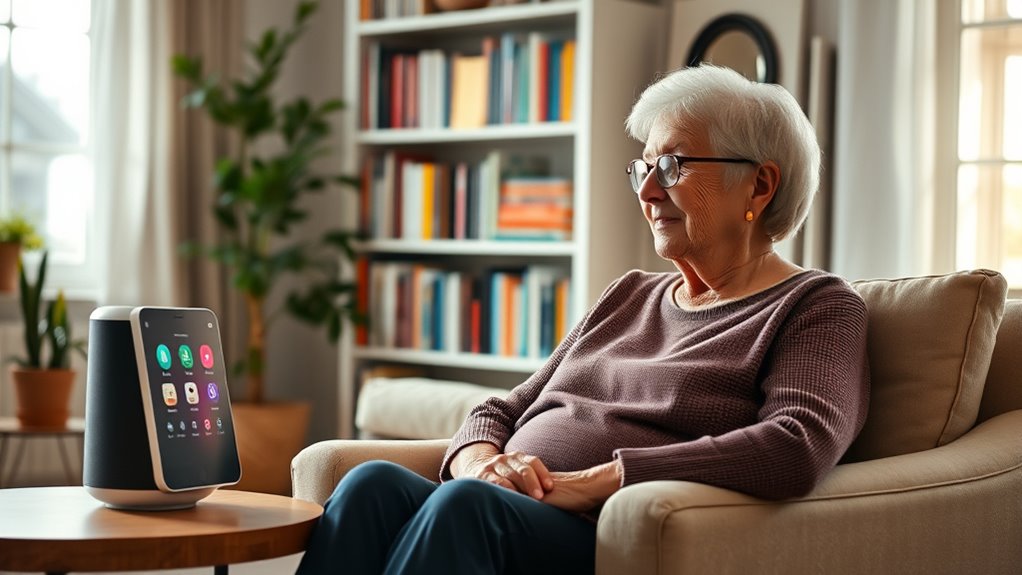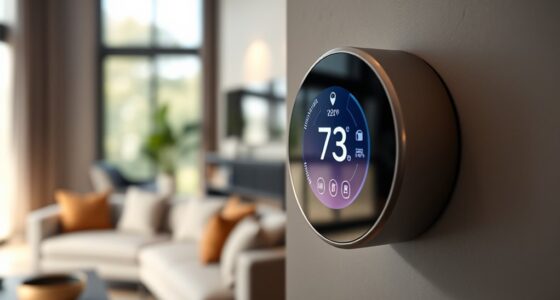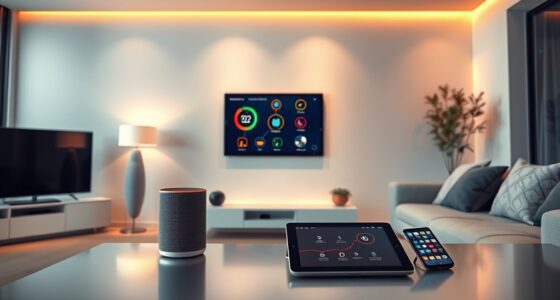To get started with voice control, pick a device compatible with your smart home setup and guarantee it recognizes your voice clearly. Set it up by connecting, calibrating, and adjusting privacy settings to keep your information safe. Speak slowly and clearly, using simple commands for tasks like calling, reminder setup, or controlling lights. If issues arise, troubleshoot by reducing background noise or restarting the device. Keep exploring, and you’ll learn how to make voice control effortless and safe for your daily life.
Key Takeaways
- Choose a user-friendly voice device compatible with your existing smart home gadgets.
- Set up the device by connecting, calibrating your voice, and adjusting privacy settings.
- Speak clearly and naturally, using simple commands for better recognition.
- Place the device in accessible areas like the living room or bedroom for frequent use.
- Troubleshoot common issues by reducing background noise and updating device software.
Understanding Voice Control and Its Benefits
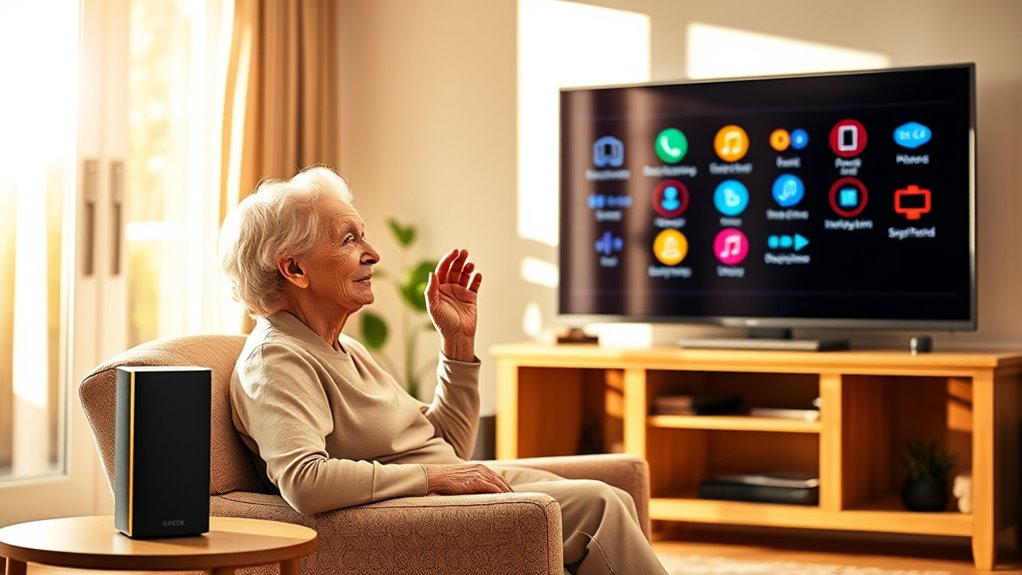
Understanding voice control and its benefits is essential for seniors looking to simplify their daily routines. Voice recognition technology allows you to perform tasks hands-free, making activities like setting reminders, making calls, or controlling smart devices easier. It can boost independence and provide quick access to information without needing to navigate complex menus. Additionally, many devices now incorporate dog breed recognition features that can identify and respond to the specific needs of different breeds. However, it’s important to be aware of privacy concerns. When using voice-activated devices, your voice data is processed and stored, which might raise worries about personal privacy. To address this, choose devices with clear privacy settings and understand how your data is used. Overall, mastering voice control can make your life more convenient, but staying informed about privacy helps you use this technology safely and confidently.
Choosing the Right Voice-Activated Device
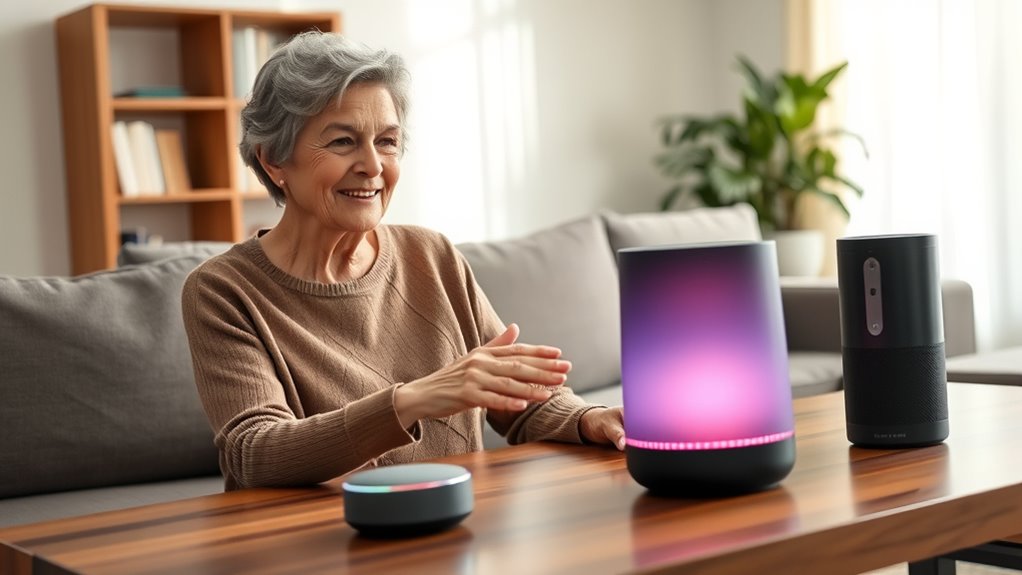
Choosing the right voice-activated device can make a significant difference in how easily you incorporate voice control into your daily life. Start by considering device compatibility—verify it works with your existing smart home gadgets or favorite apps. You’ll also want a device with strong voice recognition, so it accurately understands your commands even if you have a softer voice or speak with an accent. Think about where you’ll use the device most often; some are better suited for the living room, others for the bedroom or kitchen. Check if the device supports the features you need, like setting reminders, playing music, or controlling lights. Additionally, understanding the Pimple Patch technology can help you choose devices that offer more precise and responsive voice commands, ensuring smooth interactions and helping you enjoy the full benefits of voice control.
Setting Up Your Voice Control System

Getting your voice control system up and running is straightforward when you follow a few simple steps. First, connect your device and follow the setup prompts. Next, perform voice calibration by speaking clearly into the microphone, ensuring the system recognizes your voice accurately. Then, review and adjust privacy settings to control what data is shared and stored. Use the table below for a quick overview:
| Step | Action | Tip |
|---|---|---|
| Connect Device | Plug in or turn on device | Ensure Wi-Fi is active |
| Voice Calibration | Say commands as prompted | Speak clearly and naturally |
| Privacy Settings | Access settings menu | Limit data sharing where possible |
| Final Check | Test voice commands | Confirm system responds correctly |
This guarantees your voice control system is personalized, secure, and ready to assist you. Additionally, being aware of supermarket hours today can help you plan your shopping trips around your voice commands for errands.
Tips for Effective Voice Commands
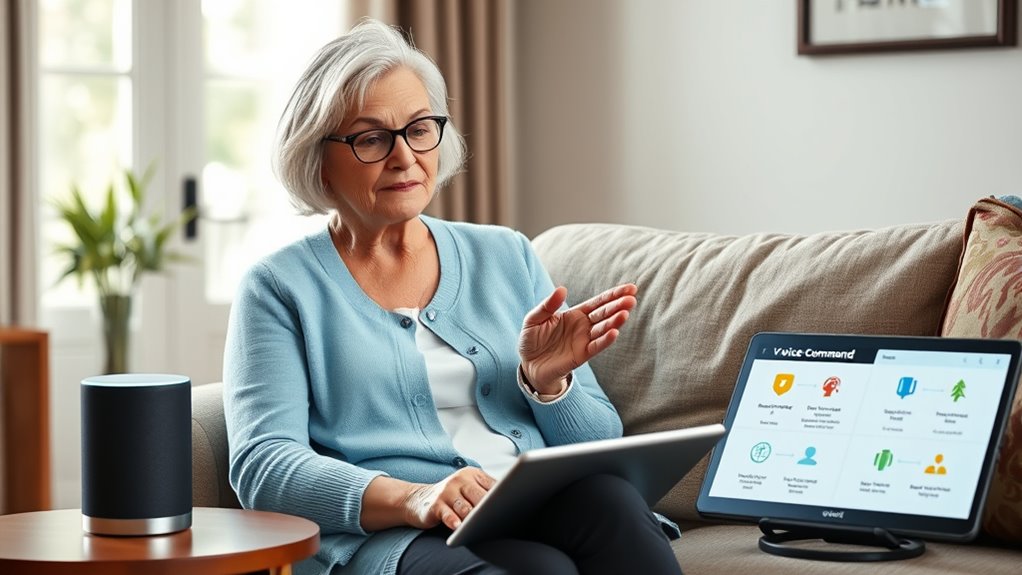
To communicate effectively with your voice control system, speak clearly and naturally. Use simple, direct voice command phrasing to guarantee your device understands you. Avoid mumbling or speaking too fast, as this can reduce speech clarity and cause errors. Practice pausing briefly between commands to give the system time to process each one. If the system doesn’t respond correctly, try rephrasing your command with different wording or more specific instructions. Keep your tone steady and avoid background noise, which can interfere with recognition. Remember, consistent, clear speech helps improve accuracy over time. Incorporating protective styling benefits can also make your hair more manageable and easier to communicate with during styling processes. With practice, your voice commands will become more effective, making your experience smoother and more enjoyable.
Troubleshooting Common Issues
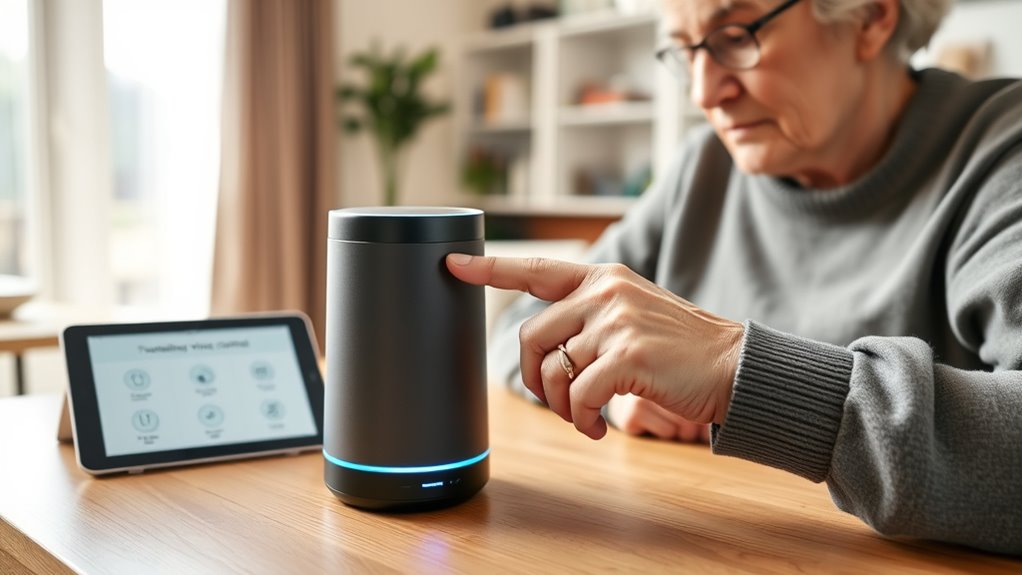
When your voice control system isn’t responding as expected, it’s important to identify and resolve common issues promptly. Sometimes, background noise interferes with recognition, so try reducing noise or enabling noise cancellation features. Check your privacy settings to ensure your device is listening when you want it to. Make sure your microphone is unobstructed and working properly. Sometimes, the system needs a quick restart or software update to function correctly. Additionally, verify that voice commands are clear and within the supported language and command list. Here are some tips to troubleshoot:
If your voice system isn’t responding, check noise levels, privacy settings, microphone, and restart for quick fixes.
- Adjust noise cancellation settings
- Review and update privacy settings
- Ensure microphone isn’t blocked or dirty
- Restart or reset your device
- Speak clearly and at a steady pace
Being aware of environmental considerations can also help improve voice recognition accuracy in outdoor or noisy camping environments.
Frequently Asked Questions
How Secure Is Voice Control Regarding Personal Privacy?
Voice control can be secure if you take proper steps, but it does pose concerns about voice privacy and data security. Your device might store or transmit your voice data, so it’s essential to review privacy settings and understand how your data is used. Regularly update firmware and use strong, unique passwords. Being cautious about what you say and understanding your device’s privacy policies helps protect your personal information.
Can Voice Control Understand Different Accents or Speech Impairments?
Voice control can understand different accents and speech impairments, but accuracy varies. For example, a senior with a thick regional accent might struggle initially, similar to a case where speech impairments caused misinterpretations. Technology continues improving, making it more inclusive for accent diversity and speech impairments. You’ll find that many voice systems now adapt over time, helping you communicate effectively despite pronunciation differences or speech challenges.
Is Voice Control Compatible With All Smart Home Devices?
Voice control isn’t compatible with all smart home devices due to varying smart device compatibility and voice assistant limitations. You should check if your devices work with your chosen voice assistant, like Alexa or Google Assistant. Some older or niche devices may not respond to voice commands, so verifying compatibility before purchasing or setting up new devices saves you time and frustration. Always verify your devices are compatible for seamless voice-controlled smart home experiences.
How Do I Update or Improve Voice Recognition Accuracy Over Time?
You can improve voice recognition accuracy by regularly using training techniques and calibrating your device. Many smart devices learn from your voice over time, so speaking clearly and consistently helps. Additionally, update your device’s software, which often includes improvements to voice recognition. Repeating commands and providing feedback to the system also helps it adapt better to your speech patterns. With patience and regular updates, your device becomes more responsive and accurate.
What Should I Do if My Voice Commands Are Not Recognized?
If your voice commands aren’t recognized, start by troubleshooting your microphone to verify it’s working properly. Speak clearly and at a steady pace to improve speech clarity. Make sure there’s no background noise that could interfere. Check your device’s settings to confirm voice recognition is enabled and calibrated correctly. Practicing your commands regularly helps your device better understand your voice, leading to more accurate recognition over time.
Conclusion
Voice control can truly enhance your daily life, offering independence and convenience. With over 60% of seniors now using voice-activated devices, embracing this technology is more accessible than ever. By understanding the basics and practicing effective commands, you’ll enjoy a seamless experience. Remember, patience is key as you familiarize yourself with your device. Start today, and discover how voice control can make your routines simpler and more enjoyable.
